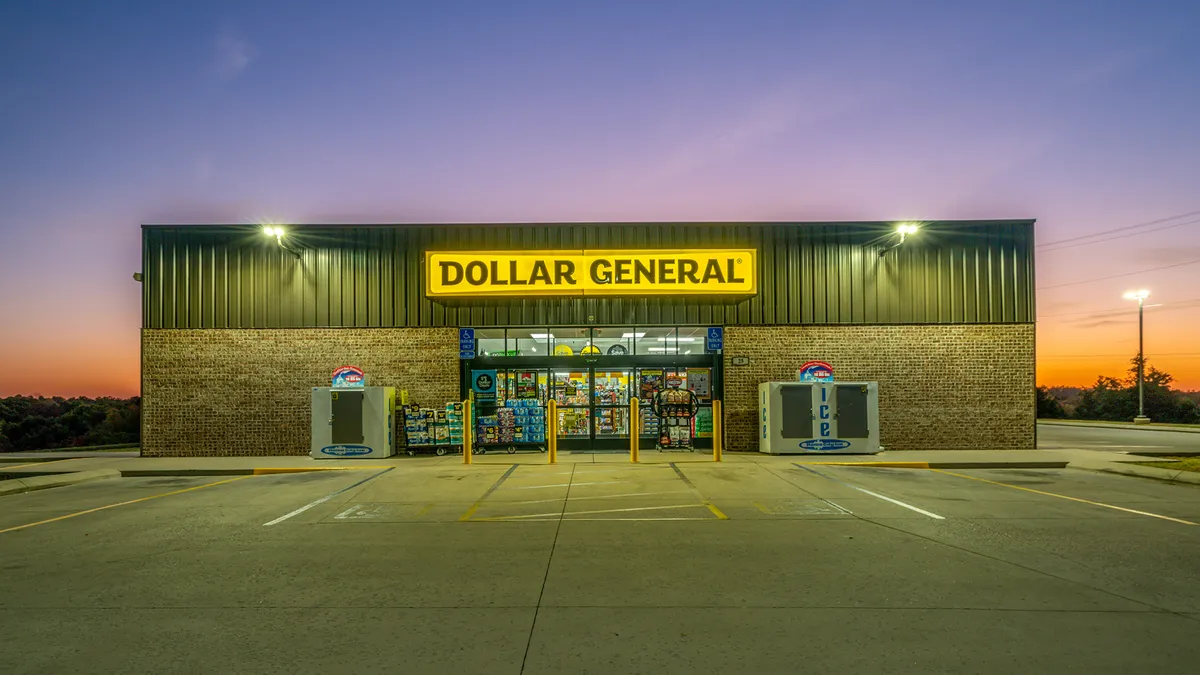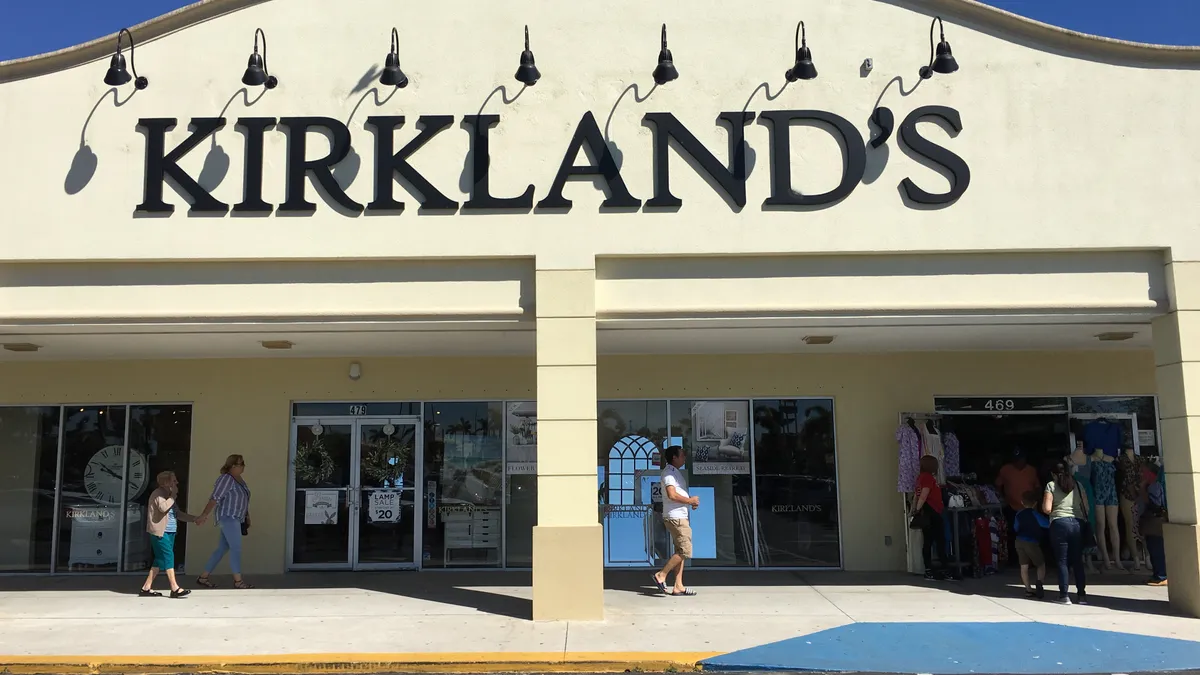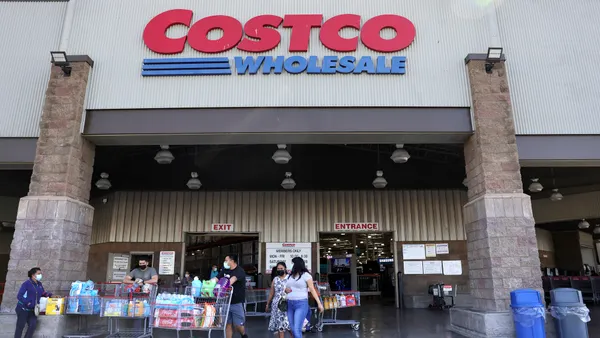Dollar General reached a milestone in February with the opening of its 20,000th store in southeastern Texas. And the retailer wants to keep growing.
During an earnings call in March, Dollar General said it expects to complete 2,385 real estate-related projects this year. That includes opening 800 more new stores, remodeling 1,500 locations, and relocating 85 stores.
Comparison helps put Dollar General’s substantial size in context. Just five states – Texas, Georgia, Florida, North Carolina and Pennsylvania – have over 5,800 Dollar General stores, which is more shops than Walmart has in the U.S. overall.
In the face of persistent inflation and discretionary spending pressures, Dollar General's real estate strategy is accelerating. As the management of brick-and-mortar retail assets becomes more important than ever, the company has maintained consistent store growth despite ever-shifting trends.
Dollar General's achievement of opening 20,000 stores didn't happen overnight,” Jonathan Zhang, an associate professor in business at Colorado State University, told Retail Dive in an email. Zhang, who studies retail and consumer behavior, said the Tennessee-based retailer’s strategic maneuvering, ability to understand the pulse of the consumer and unwavering commitment to under-served markets helped enable the retailer’s rise.
Virginia-based Dollar Tree, which also owns the Family Dollar brand, is close behind Dollar General, with a store count of about 16,774 locations between both banners as of Feb. 3.
The retailer said in a February regulatory filing that it saw more room for growth, with a long-term potential to support more than 10,000 Dollar Tree and 15,000 Family Dollar stores in the U.S. But in a reversal last month, Dollar Tree said during an earnings call that it plans to close 600 Family Dollar Stores this year. The company plans to close 370 more Family Dollar locations and 30 Dollar Tree stores as leases expire – 1,000 in total.

“The dollar stores have been on an expansionary tear over the past ten years and now have extremely large store estates,” Neil Saunders, managing director of GlobalData, told Retail Dive in emailed comments ahead of the rival retailers’ earnings announcements. “Most of this is because dollar stores serve relatively small catchments, so there’s a lot of potential sites for new stores, including in rural areas. The [payback] time on a new store is quick, so it is relatively easy to push heavy expansion from a capital investment standpoint.”
However, in the wake of Dollar Tree’s decision to shrink its footprint, Saunders said later in emailed comments that nearly 10 years after acquiring Family Dollar, “Dollar Tree is still sifting through the mess it inherited and has not been able to completely turn around.” Family Dollar as a banner tends to underperform in the segment, with core shoppers who use the store more out of convenience than anything else, Saunders said.
Offering the right products in the right place
Zhang said small towns and rural communities, where the nearest big box retailers might be miles away, are Dollar General’s core market. By placing itself close to customers who may not have many choices and offering convenience and affordable prices, the retailer has charted a successful path for growth. “This approach ensures that each store can be opened with less capital and run more efficiently, making the rapid expansion financially feasible,” Zhang said.
One part of what makes this work, Zhang continued, is Dollar General’s lean operating model. The foundation of that model includes smaller stores with a curated product selection that includes quality private-label products. Dollar General stores average about 7,500 square feet in size, although the company is transitioning to a new primary store format of 8,500 square feet of selling space.
Saunders echoed Zhang in saying that dollar stores’ focus on rural areas is a cornerstone of their success and growth. Retail competition in rural communities is often weak, “so dollar stores have a very captive market and are often a very convenient option for consumers who would otherwise have to drive further afield for everyday essentials. While price is often cited as a reason for the success of the dollar stores, the convenience angle should not be underestimated.”
What’s the outlook for physical store growth?
Several issues influence retailers’ decisions on store counts and physical footprints, Zhang said. Among them, the normalization of e-commerce is forcing retailers to reevaluate the role and function of physical stores. The outcomes include positioning stores as showrooms and fulfillment centers for online shopping.
“The retail world is at a crossroads, where consumer shopping behaviors, technological advancements in e-commerce, and economic factors converge,” Zhang said. “Retailers are increasingly scrutinizing the performance of each store, considering not just the sales it generates but also its role in the omnichannel shopping experience.” Zhang also said that the normalization of e-commerce is forcing retailers to reevaluate the role and function of physical stores.
Dollar General acknowledged that each part of its business, including the physical store footprint, must be continually refined and reevaluated as the company contends with constant challenges and changes beyond its control.
“Competition is intense and we believe it will continue to be so, with certain competitors reducing their store locations while others move into or increase their presence in our geographic and product markets and increase the availability of mobile, web-based and other digital technology to facilitate a more convenient and competitive online and in-store customer shopping experience,” Dollar General said in its 2022 10-K.
The company says its direct rivals include Dollar Tree and Family Dollar and Big Lots. Another rival, 99 Cents Only stores, announced on April 4 that it is closing its 371 stores, going out of business and liquidating. Other competitors include Walmart, Target, Kroger, Aldi, Walgreens, CVS and Rite Aid, along with local and independent retailers.
Dollar General’s milestone store opening earlier this year prompted Retail Dive to take a closer look at how some of the company’s self-identified competitors are managing their brick-and-mortar footprints.
Walmart
Store count: 5,214 retail units in the U.S.
In a February earnings call, CEO Doug McMillion said Walmart plans to add more than 150 Supercenters in Neighborhood Markets in the U.S. as part of a five-year plan. As part of that initiative, some of the projects involve converting smaller locations to Supercenters. Walmart also said in January that it planned to remodel 650 stores this year. The new and remodeled stores will feature the retailer’s Store of the Future concept, which focuses on improved layouts, expanded product selections and technology.
“Our physical fleet is getting stronger, and it plays a hybrid role serving customers and members when they visit and simultaneously enabling an important portion of e-commerce. Beyond our stores and clubs, we're continuing to strengthen our first- and third-party e-commerce capabilities and scale those businesses around the world,” he said.
Saunders said Walmart’s approach to expansion is focused on larger stores. “Walmart already had a very strong store estate, including in more rural areas. Walmart has spent the past year optimizing its fleet by closing poorly performing shops and identifying targets for new ones. Walmart is now undertaking what I call an infilling exercise – adding stores to locations where it is underrepresented and can capture more market share,” he said.
Target
Store count: 1,956 in the U.S.
As of early April, Target listed plans for 44 store openings in 18 states. If all the currently announced openings move forward, the Minneapolis-based retailer’s store count will reach 2,000 stores. Investments in brick-and-mortar stores are the key element of Target’s long-term growth strategy, CEO Brian Cornell said during a recent earnings call.
“Without huge investments in stores, supply chain, and tech, there is no drive up or order pickup, which were monumental growth drivers during COVID and today,” Cornell said. “And without stores, supply chain and tech, and providers like UPS, FedEx, and Shipt, there is no home delivery, which is ready for a step change in guest acquisition, satisfaction, and loyalty.” The company plans to open 300 new, mostly full-sized stores and remodel most of its stores over the next decade.
Big Lots
Store count: 1,392 as of March
Big Lots’ financial issues have limited the pace of growth, Saunders told Retail Dive.
In March, Big Lots reported its full-year net sales fell nearly 14% to $4.72 billion from $5.47 billion year over year. The company also ended the year with a net loss of nearly $482 million. The company is on Retail Dive’s bankruptcy watch list due to its heavy debt load and falling market capitalization.
The retailer said in March that it slashed $140 million of selling, general and administrative expenses, cut capital expenditures by nearly 60% year over year, reduced inventory by nearly $200 million and completed a sale and leaseback of nearly two dozen stores and a distribution center to generate nearly $300 million.
“Their existing stores are also not working optimally, so the challenge has been to find a new format that works better,” Saunders said. “They have tested a new concept that places more emphasis on home in the hope it will drive improved sales numbers. It remains to be seen how this works, but it is a crucial piece of the jigsaw before they can expand with confidence.”
Chief Financial Officer Jonathan Ramsden acknowledged the issues during a March earnings call, telling analysts and investors that Big Lots’ new store commitments are on hold until the company’s business situation improves.























